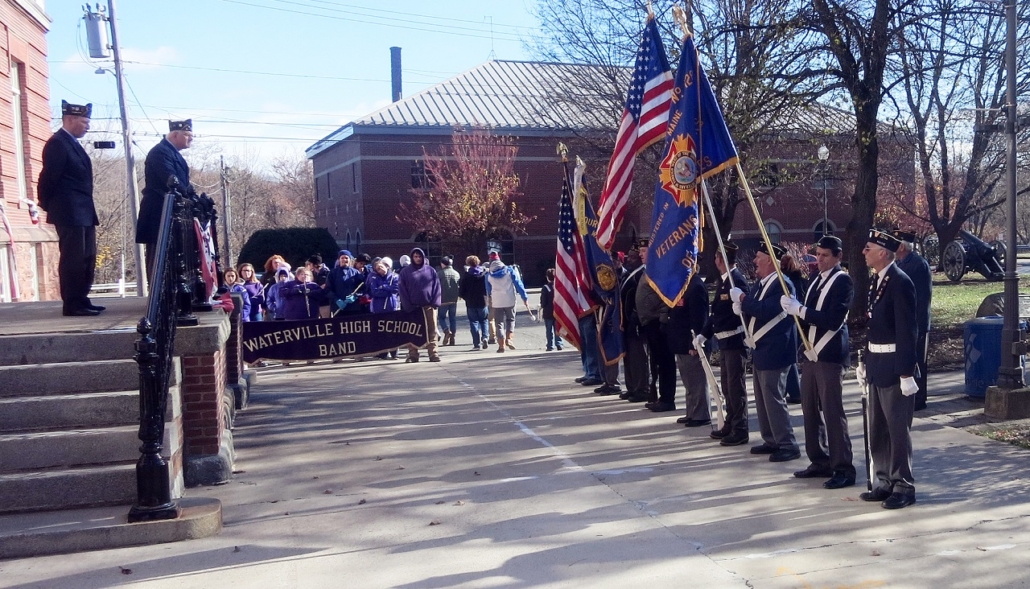FOR YOUR HEALTH – Uniformed Services Members: Protect Your Family With The Federal Long Term Care Insurance Program
 (NAPSI)—The prospect of needing long term care may be far from your mind today, but be aware, circumstances can change. A long term care event can happen at any age, and the potential financial and emotional strain that comes with it can affect you and your loved ones.
(NAPSI)—The prospect of needing long term care may be far from your mind today, but be aware, circumstances can change. A long term care event can happen at any age, and the potential financial and emotional strain that comes with it can affect you and your loved ones.
Millions of Americans require long term care during their lifetimes*. This includes needing either cognitive or physical assistance with simple tasks such as bathing, eating and dressing—trivial things most people do every day without a second thought. Unfortunately, traditional health insurance plans—including TRICARE For Life—do not pay for the chronic, ongoing assistance with daily living that is most often associated with long term care.
In fact, the long term care benefits offered through the Department of Veterans Affairs (VA) are tied to specific triggers, including service-connected disability, available funding and even your ability to contribute to the cost of care. Long term care can be expensive and service members often rely on the VA to cover the associated costs. Depending on your eligibility status in the VA program, the level of coverage available to you may not be enough. For this reason, you may want to research stand-alone long term care insurance such as a plan offered through the Federal Long Term Care Insurance Program (FLTCIP).
Since its launch in 2002, the FLTCIP has offered active and retired members of the uniformed services the opportunity to help take control of their future long term care needs. Designed to provide solutions for a range of financial situations, this employer-sponsored program provides comprehensive coverage for more than 270,000 enrollees.
Many members of the federal family are eligible to apply for coverage under the FLTCIP, including active and retired members of the uniformed services. Certain qualified relatives are also eligible to apply even if you do not. Qualified relatives include your spouse, domestic partner, parents and parents-in-law, and adult children.
Coverage under the FLTCIP
The FLTCIP can lessen or even eliminate an individual’s reliance on a loved one to provide hands-on care. Consider these important benefits:
- The FLTCIP offers coverage in a variety of settings—at home or in a facility, such as an assisted living facility, an adult daycare, or a nursing center—and your choice of caregiver.
- If home care is your preference, the stay-at-home benefit includes a range of services that support care in your home, helping you maintain your quality of life in familiar surroundings.
- Informal care provided by friends and family members, as long as they do not live in your home at the time you become eligible for benefits. Benefits for care provided by family members are limited to 500 days.
- The program’s care coordination services offer enrollees and their qualified relatives information about long term care resources, such as local care providers and relevant community programs, as well as valuable support to your family and friends.
Talk candidly with your family members and tell them about the FLTCIP. Starting the conversation prior to needing care can help you prepare for the unexpected. Visit LTCFEDS.com/militaryfamily to learn more about the benefits of applying for the FLTCIP.
For personalized assistance, call (800) LTC-FEDS (800) 582-3337/TTY (800) 843-3557 to speak with a program consultant. He or she will answer any questions you may have and can walk you step by step through the plan design and application process.
You should also know that certain medical conditions, or combinations of conditions, will prevent some people from being approved for coverage. You need to apply to find out if you qualify for coverage.
More about the FLTCIP
Established by an act of Congress in 2000 and overseen by the U.S. Office of Personnel Management (OPM), the FLTCIP is designed to meet the specific needs of the federal family. The long term care insurance under the FLTCIP provides industry-leading benefits and offers flexible options that allow enrollees to tailor coverage to meet their needs.
The FLTCIP is sponsored by the U.S. Office of Personnel Management, insured by John Hancock Life & Health Insurance Company, and administered by Long Term Care Partners, LLC.


 (NAPSI)—Most people know someone who has dreamed of leaving the rigidity of a 9 to 5 job to pursue the flexibility of entrepreneurship. The majority don’t pursue that avenue, and the reasons vary, including financial obligations, time constraints, or fear of the unknown.
(NAPSI)—Most people know someone who has dreamed of leaving the rigidity of a 9 to 5 job to pursue the flexibility of entrepreneurship. The majority don’t pursue that avenue, and the reasons vary, including financial obligations, time constraints, or fear of the unknown. (NAPSI)—Smile. It’s vacation time—and there are so many paths to fun and adventure close to home.
(NAPSI)—Smile. It’s vacation time—and there are so many paths to fun and adventure close to home.
 (NAPSI)—A stroke can happen to anyone, of any age, at any time, so it’s important for everyone to learn and understand the signs and symptoms of stroke. The condition, also known as a “brain attack,” is the fifth leading cause of death in the United States and affects more than 795,000 people each year.
(NAPSI)—A stroke can happen to anyone, of any age, at any time, so it’s important for everyone to learn and understand the signs and symptoms of stroke. The condition, also known as a “brain attack,” is the fifth leading cause of death in the United States and affects more than 795,000 people each year.
 (NAPSI)—About 40.7 million Americans have some kind of disability, according to the U.S. Census Bureau. If you or someone you care about has a disability, you may wonder what it means for employment. You may be encouraged to know that there are supports and services available that can help you or your loved ones pursue work and reach your goals through Social Security’s Ticket to Work (Ticket) program.
(NAPSI)—About 40.7 million Americans have some kind of disability, according to the U.S. Census Bureau. If you or someone you care about has a disability, you may wonder what it means for employment. You may be encouraged to know that there are supports and services available that can help you or your loved ones pursue work and reach your goals through Social Security’s Ticket to Work (Ticket) program.
 (NAPSI)—One of the best and most effective ways to benefit from nonpsychoactive, THC-free CBD is to use it on the largest organ of your body: your skin. CBD oil is the nonpsychotropic component of marijuana and hemp, well-known for relieving aches and pains when applied topically. Now, it’s found in skin care products such as the luxury line from Mermaid Wizdom—and with good reasons.
(NAPSI)—One of the best and most effective ways to benefit from nonpsychoactive, THC-free CBD is to use it on the largest organ of your body: your skin. CBD oil is the nonpsychotropic component of marijuana and hemp, well-known for relieving aches and pains when applied topically. Now, it’s found in skin care products such as the luxury line from Mermaid Wizdom—and with good reasons.